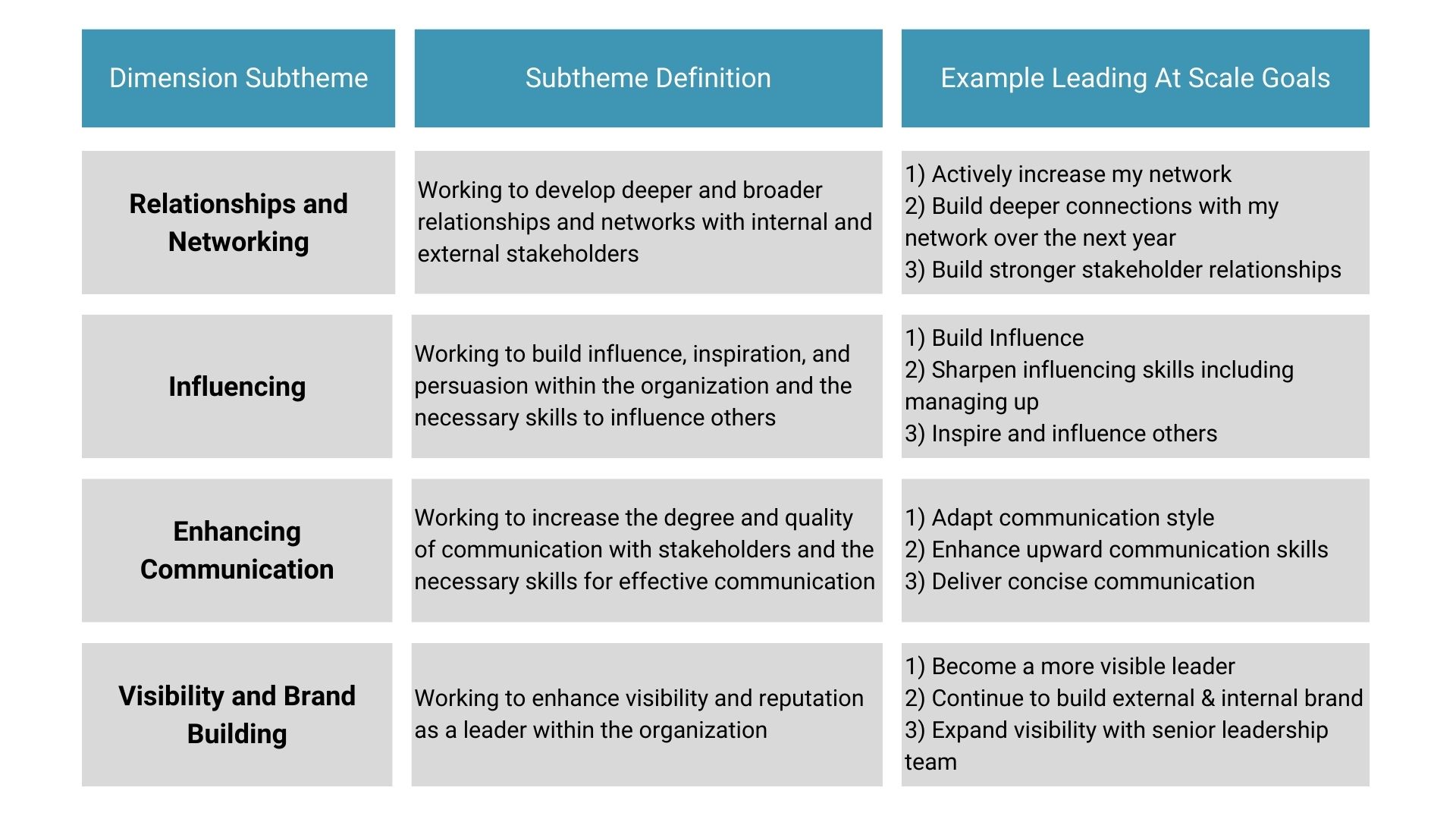Mastering the Art of Influencing at Scale

I recently had the opportunity to catch up with one of the leaders I’ve been coaching. In just a couple of weeks since our last conversation, she found herself in four distinct situations that required her to influence with impact. Each scenario presented its own set of challenges, requiring her to adapt her approach swiftly and effectively. First, she faced the daunting task of addressing her board of directors, where brevity and data-based analysis were paramount. Next she navigated a delicate situation with a key external partner, requiring a conciliatory and accommodating demeanor to mend fences. Then came a town hall meeting, where her goal was to inspire and motivate a large and diverse group of individuals. Finally, she had to assert herself firmly with an encroaching peer which demanded a declarative stance to maintain boundaries.
Influence is Critical
Her experiences were a potent reminder that leaders are constantly in the position of influencing others, often with varying objectives and situational demands. This highlights the importance of accurately reading situations and adapting one’s influencing style accordingly. When learning to lead at scale, mastering the art of influencing is often a critical challenge. Common issues include inspiring others from a distance, managing diverse stakeholders with competing interests, dealing with difficult personalities, fostering alignment around strategic goals, and galvanizing others to action.
Leading at Scale
We found four subthemes (or goal types) within the broader development goals that RHR International has found align to influencing with impact through our Leading at Scale program. Those four goal types are shown below (with frequencies):
• Enhancing Communication: 30.5%
• Influencing: 15.2%
• Relationships and Networking: 41.1%
• Visibility and Brand Building: 13.3%
We defined these goal types with example goals as follows:

Through our Leading at Scale program, we’ve worked with thousands of leaders to help them influence at scale. We focus on three pillars:
1. Self-Awareness
Leaders need to be acutely aware of many factors that ultimately shape their ability to influence others. Factors include:
• Eliminating blind spots to understand accurately how you are perceived by others
• Appreciating your natural tendencies, comfort zone, and zone of discomfort in influencing others
• Understanding your strengths and weaknesses in influencing others
• Recognizing the stress triggers and behaviors that undermine your ability to influence effectively
Self-awareness can be strengthened through targeted feedback and self-reflection to inform areas such as the following:
o How effectively do you inspire a feeling of trust? What behaviors should you amplify or mitigate to build trust more consistently?
o What is your preferred style of influence? What styles of influence are less comfortable for you?
o In what influence situations do you excel? In what situations do you have more difficulty achieving your intended goals?
o What are your biggest strengths and skill deficits in influencing others? For example, do you have a hard time delivering inspiring messages that resonate emotionally with people?
2. Situational Judgment
This is the ability to assess specific objectives, interpersonal dynamics, and contextual factors to determine the most appropriate approach for a particular situation. It requires a deep understanding of stakeholder motivations, triggers, and preparation for successful interactions. To build situational awareness, leaders can focus on questions such as the following:
• What are your objectives for the situation? For example, do you need more partnership or cooperation from a key stakeholder?
• How would you evaluate the level of trust in the relationship?
• Given your objectives, what approach or style of influence is most suitable—assertive, conciliatory, collaborative, etc.?
• Are there any triggers or sensitive points for stakeholders? Do any of their actions provoke a strong reaction from you?
• How should you prepare for interactions with specific stakeholders?
3. A Diverse Skillset
This requires developing a broad range of influencing skills and the confidence to apply them effectively. It includes the ability to adapt seamlessly between different styles of influence as circumstances evolve. A diverse skillset can be cultivated by:
• Pinpointing specific skills you need to strengthen. For example, do you need to sharpen your ability to be assertive in certain situations?
• Practicing new skills, initially in a safe environment where you can receive coaching and feedback.
• Leveraging some basic principles of behavior change. As examples, set up triggers to cue specific behaviors where appropriate. Focus on repetition for behaviors if you are trying to make a new behavior more automatic and less effortful. Build in small rewards to reinforce your application of new skills and behaviors.
Ultimately, mastering the art of influencing at scale is possible. Through our Leading at Scale program, leaders often achieve measurable and lasting improvement by cultivating self-awareness, strengthening situational judgment, and building a more diverse skillset.











